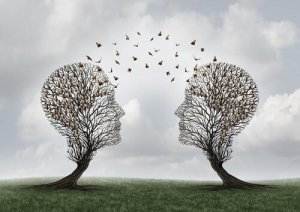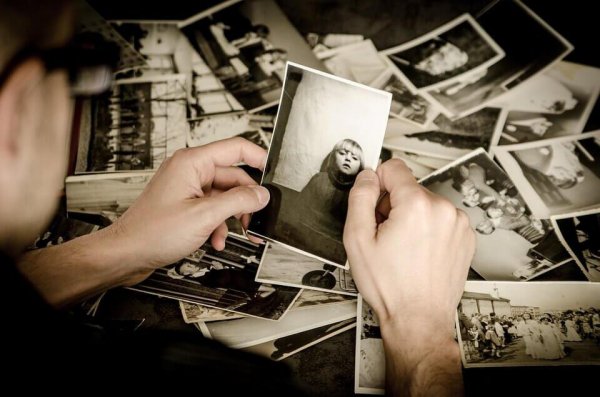What is Social Cognition?

What is social cognition? Social cognition is just the study of how we process information (Adolphs, 1999). To put it another way, the process includes the way in which we code, store and retrieve information from social situations.
Currently, social cognition is the prevailing model and approach in social psychology. The alternative is behaviorism, which rejects mental processes when explaining behavior (Skinner, 1974).
Social cognition is the way we think about others. Basically, it is a powerful tool for understanding social relationships. Through social cognition, we understand other people’s emotions, thoughts, intentions and social behaviors. In fact, knowing what other people think and feel can be a huge advantage.

How does social cognition work?
People don’t approach situations as neutral observers — although we often pretend that we do. We have our own desires and expectations and they influence what we see and remember. In other words, our senses receive information that we then interpret and analyze. Then, we contrast these interpretations with the information we store in our memory.
However, this simple description is not how it always happens in real life. There are other factors, such as emotions, that also influence the process. Remember that thoughts influence emotions, but emotions also influence thoughts (Damasio, 1994).
For example, when we’re in a good mood, the world is (or seems) to be a happier place. When we’re happy, we tend to perceive the present more optimistically, seeing both the past and the future more positively as well.
How does social cognition develop?
Social cognition develops slowly (Fiske and Taylor, 1991). We go through a process of trial and error based on observation. Direct experiences and exploration guide learning. However, social knowledge is very subjective; we can come to widely differing interpretations of a social event.
In addition, although we have mental structures that facilitate information processing and organization, sometimes they fail us. These structures or schemes influence what we focus on. They also influence how we code and retrieve information, and can lead to self-fulfilling prophecies. Self-fulfilling prophecies are predictions that actually cause the thing that was predicted to happen (Merton, 1948).
On the other hand, social knowledge is, in part, independent from other types of knowledge. People who very good at the problem-solving measured in IQ tests are not always as good at solving social problems.
Problem-solving skills can be learned or taught, separate from intellectual abilities. Hence the importance of working on our different intelligences, like emotional and cultural intelligence.

Put yourself in the other person’s shoes
One of the most useful models of social cognition comes from Robert Selman. Selman put forth a theory about people’s ability to see from the social perspective of others. For him, taking on another’s social perspective is what gives us the power to understand ourselves and others as subjects. This allows us to react to our own behavior from the point of view of others. Selman (1977) created 5 stages of perspective-taking:
- Stage 0: undifferentiated perspective (from 3 to 6 years). Until about 6 years of age, children cannot clearly distinguish between their own interpretation of a social situation and another’s point of view. Nor can they understand that their own conception may not be correct.
- Stage 1: social-informational perspective (from 6 years to 8 years). At this age, children develop the knowledge that other people can have a different perspective. However, children have little understanding of the logic behind others’ perspectives.
- Stage 2: self-reflective perspective (8 to 10 years). Pre-adolescents, at this stage, can take on the perspective of another individual. Pre-teens are already able to differentiate between different perspectives. They can also reflect on motivations underlying their own behavior from the perspective of another person.
- Stage 3: third-party or ‘bystander’ perspectives (10 to 12 years). Children can see their own perspectives, those of their peers, as well as those of a neutral third person. As third-person observers, we see ourselves as the object.
- Stage 4: societal perspective (adolescence and adulthood). There are two characteristics that underly adolescents’ conceptions of other people. First, they become aware that motives, actions, thoughts and feelings are shaped by psychological factors. Second, they begin to appreciate the fact that a personality is a system of traits, beliefs, values and attitudes.

Two ways of seeing social cognition
Within psychology there are several ways of understanding social cognition. One of the most important ways emphasizes knowledge’s social dimension. Knowledge, according to this perspective, has a socio-cultural origin, since it is shared by social groups.
Moscovici is the main representative of this idea (1988). He spoke about “social representations,” ideas, thoughts, images and knowledge that members of a community share. Social representations have a dual function: knowing reality in order to plan action and also to facilitate communication.
The American perspective on the issue has also had great impact (Lewin, 1977). It is a way of understanding social cognition that focuses on the individual and their psychological processes. According to this perspective, a person constructs their own cognitive structures from interactions with their physical and social environment.
To conclude, social cognition is the way we handle the large amount of social information we take in each day. The stimuli and data we collect with our senses are analyzed and integrated into mental schemes, which will guide our thoughts and behaviors later on.
These schemes, once formed, are difficult to change. Like Albert Einstein said, it’s harder to split prejudice than an atom. Our first impressions stick with us, unless we think about them critically.
Bibliography
Adolphs, R (1999). Social cognition and the human brain. Trends in Cognitive Sciences 3: 469-79.
Damasio, AR (1994). Descarte’s error: Emotion, reason and the human brain. Nueva York: Picador.
Fiske, S. T. y Taylor S. E. (1991). Social Cognition. McGraw-Hill, Inc.
Lewin, K. (1997). Resolving social conflicts: Field theory in social science. Washington, DC: American Psychological Association.
Merton, R. K. (1948). The self fulfilling prophecy. Antioch Review, 8, 195-206.
Moscovici, S. (1988). Notes towards a description of social representations. Journal of European Social Psychology, 18, 211–250.
Selman, R. L., Jaquette, D. y Lavin, D. R. (1977). Interpersonal awareness in children: Toward an integration of developmental and clinical child psychology. American Journal of Orthopsychiatry, 47, 264–274.
Skinner, B. (1974). Sobre el conductismo. Barcelona: Fontanella.
This text is provided for informational purposes only and does not replace consultation with a professional. If in doubt, consult your specialist.








